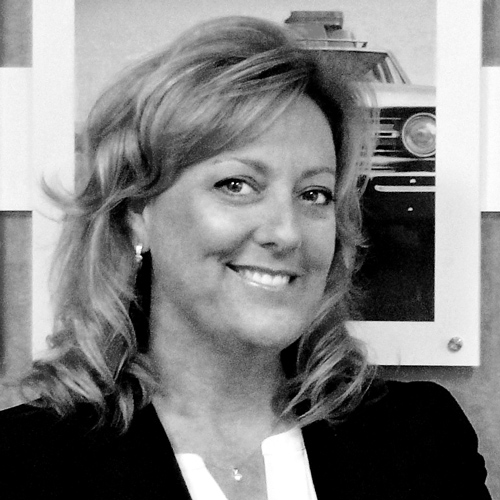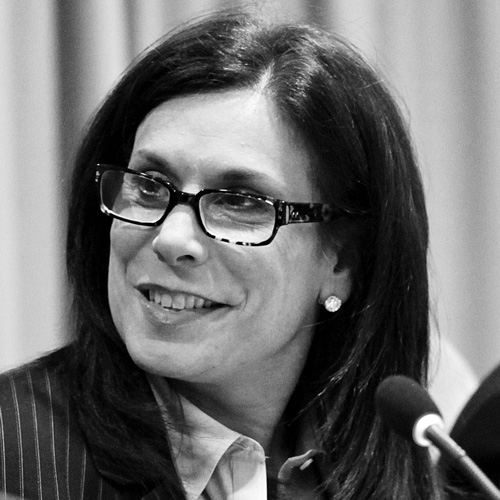
For a company that has been around for more than a century, General Electric has a knack for staying relevant. In the past five years alone, it has surfaced in a multitude of corporate rankings: most profitable companies, best global brands, most innovative companies, and best companies for leaders, to name just a few. And at least one of its leaders—Maryrose Sylvester, president and CEO of GE Lighting—embraces the call to keep her division not just current, but ahead of the curve.
“We are on a mission to transform our business as the industry moves from traditional light systems to LED systems,” she says. “Every initiative has rallied around that business transformation because of an industry transformation . . . so we need to drive really lean principles throughout all our operating units, making the right product at the right time with the right cost.”
TRANSFORMATION INITIATIVES
Sylvester sees the initiatives as threefold: (1) reshaping GE Lighting’s product offerings to more LED-based technologies, providing customers with better energy production and lower operating costs; (2) creating a commercial transformation to change what they’re selling and how they’re selling it, putting more focus on selling outcomes and helping end users solve “tough customer problems” with better systems; (3) creating a supply chain transformation into more of an application-based business.
As if the initiatives themselves weren’t enough of a challenge, the entire trajectory kicked into a higher gear when market leader Wal-Mart made the decision early in 2014 to have a 100 percent LED footprint in the majority of its newest locations. Considering Wal-Mart had previously planned to put off such a transition until 2020, that decision was one of the factors that “really put an exclamation point on this acceleration,” says Sylvester. The trend for city and commercial lighting to shift to LED technology is another major factor, with Las Vegas and San Diego among the larger cities already on board.
“It’s forcing much shorter cycles in our product development process, which in turn is causing us to change our marketing strategy to what’s new and what’s current,” Sylvester says. “So it’s definitely affected our day-to-day business planning, but we still have a very long-term view of where the business needs to go.”
“Being a leader today requires an enormous appetite for change, and I’m fortunate because I really like leading change,” she adds.
FROM LONG HISTORIES TO UNCHARTED TERRITORIES
One thing that has not changed much in twenty-seven years is Sylvester’s alliance with General Electric. After starting there as an intern, she was only briefly employed elsewhere before spending fourteen years in GE’s lighting division, followed by a decade in other parts of the company. She was most recently employed by industrial automation before returning to lighting in 2011. So understanding and respecting GE’s historic place in America’s business landscape is a given for her, even if the territory that lies ahead is more uncharted than ever. “What we’re trying to do . . . there’s no recipe for it; no one’s ever done it before,” she explains. “From a very old, iconic business, we’re creating something very new and extremely high tech.”
Nonetheless, as a leader, Sylvester always keeps a long-valued lesson in mind about staying surrounded not only by highly talented people, but “different” people. As in different perspectives, different experiences, and different ways of solving problems. Sylvester sees it as the best way for her team to lead change alongside her. “Diversity of race, ethnicity, sexual orientation, all of it,” she says. “We really try to embrace it at GE because it’s the right thing to do, and because we really believe it allows us to think differently, and more holistically, about the world around us.”
FASTWORKS AND SIMPLIFICATION
When it comes to business-specific strategies, Sylvester credits two ideas in particular for her division’s current success: “FastWorks” and simplification.
FastWorks is a philosophy that carries through all of GE Lighting’s transformation initiatives, from technology innovation to supply chain capability to commercial capability. It’s about taking concepts to consumers in earlier stages of development, sizing up their feasibility from the consumers’ perspective “rather than spending eighteen months in a lab developing something, and then taking it to the customer—taking a little risk earlier, when it’s less expensive to do so,” Sylvester explains. “FastWorks is probably the biggest game changer we have . . . it’s really about running GE Lighting like an entrepreneur would do, as they’d start up an LED business.”
Simplification, meanwhile, acknowledges that GE is a company fully capable of getting in its own way—if only because of its incredible size and competitive nature. The idea of simplification, according to GE, is to remove some of the layers that could bog down or ultimately smother development. “It’s about making sure everyone in our company is about winning in the marketplace, and having the IT tools to make decisions quicker,” Sylvester says. “Making our management structure lean, so there are less checkers and more do-ers . . . making GE easier to do business with on every level.”
Sylvester is the first to admit that instituting such models for change within a large, storied company hasn’t come easy. Keeping GE’s 130 years of successful growth in mind can be daunting, particularly when faced with the need to be “a doomsayer” laying out “the risks of doing nothing” in such a progressive era of technology. “It’s become about breeding that success and really letting people within the company taste it via good work and recognition in the marketplace,” Sylvester says. Following that is careful prioritization of the way to drive that change to the public.
After all, it is the public’s reception to the company’s efforts that matter the most. “When a customer stands up and says, ‘GE Lighting did this for me; you should trust them,’ that multiplies our speed exponentially, much faster than me or anyone on our staff preaching about what needs to change,” Sylvester says. “So it’s harder than it appears up front, but the accelerator is having customers speak on your behalf because you’ve actually delivered real value to them.”















